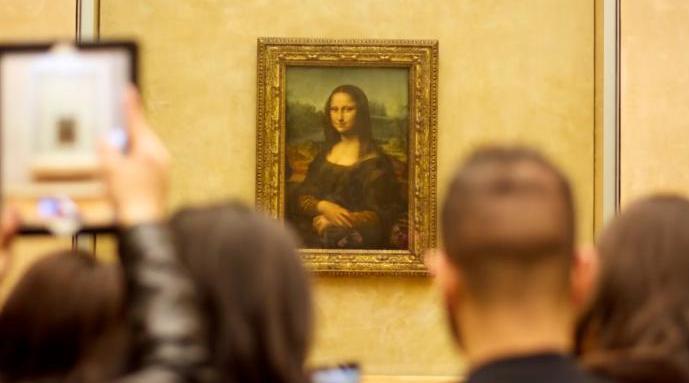吞吐五千年的文化气象——王利丰艺术展《菩萨蛮》拉开帷幕
吞吐五千年的文化气象——王利丰艺术展《菩萨蛮》拉开帷幕,红门画廊非常荣幸地宣布将于2018年11月3日至11月22日举办王利丰个展《菩萨蛮》。此次展览为王利丰继2013年于红门画廊举办的个展《籍》的延伸。艺术家从之前的布面工笔技艺转向探索纸本木刻版画和古版印刷技艺。此系列作品继续了王利丰对综合材料的创新运用,通过艺术家的当代视角同观者探讨,对中国传统文化及历史的解构和继承。
策展人序言
Curatorial Statement
文/唐泽慧 by Zehui Tang
作为中国当代抽象艺术的先行者,王利丰的创作始自于上世纪八十年代中期,至八十年代末已形成自己以抽象为基本格局的艺术样貌,尤以在绘画中对各种带有强烈中国传统文化指向的现成品和符号的创造性运用而为人称道。
Wang Lifeng, one of the pioneers of Chinese contemporary abstract art, began his artistic practice in the mid-1980’s. During this period, he refined his use of ready-made materials and symbols that held vivid cultural references to Chinese tradition.
近年来,在原来布面综合材料绘画之外,纸本绘画成为王利丰艺术探索的一个重要方面,2013年在红门画廊举办的专题展《籍》即是这一探索的开端。如果说之前“青山”系列是以油画画国画,《籍》则开始对国画的正面回应。在那批作品中,他怀着敬畏之心在宣纸上临摹了陈洪绶、任伯年笔下的经典人物,与他标志性的金箔、碑帖、丝绸、古籍等非绘画性材料拼贴在一起,在继承之中又体现出一种解构的态度。这次展览的新作是《籍》系列的延伸,不同于之前的工笔人物,王利丰首次以中国传统的木刻版画入画。
Apart from his practice in mixed-media painting on canvas, works on paper have become a crucial aspect of Wang’s artistic exploration in recent years. The solo exhibition Ji held at Red Gate Gallery in 2013 is the beginning of such direction. If one considers his previous series Qing Mountain as an attempt to create traditional Chinese painting with oil paint, works shown at Ji represents a direct response to the traditional form. The series Ji inherits and deconstructs the memorable figures he replicates in veneration of the Old Masters Chen Hongshou (陈洪绶) and Ren Bonian (任伯年) and collages together the elements with his signature materials such as gold foil, rubbing from stone inscriptions, silk and ancient books. Being an extension of the series Ji, the new works showcased in Behind the Curtain of the Boudoir manifest the first attempt of Wang’s practice in Chinese traditional woodcut techniques.
明清之际,伴随着市民文学的繁荣和成熟,木刻版画也进入发展的鼎盛时期。流传甚广的戏曲小说文本诸如《西厢记》、《昆仑奴》、《水浒》、《金瓶梅》、以及后来的《红楼梦》、《聊斋志异》等往往伴有制作精良的木刻版画插图,成为前摄影时代图像传播的重要方式。王利丰的木刻版画参考的正是这一时期的典籍。在参考古籍文献的基础上,艺术家融入自己的理解重新制版,而后将图像转印到画面之上。这些片段式的木刻形成一套角色和道具的谱系,由艺术家派兵布局,出现在不同的画面中,与金箔、色块、古籍残片组合、呼应,因着语境的不同而生成相异的故事。
In the Ming and Qing Dynasties, woodcut printing entered its heyday with the boom and maturation of secular literature. The popular operas and novels such as Romance of the Western Chamber, Kunlun Slave, Water Margin: Outlaws of the Marsh, The Plum in the Golden Vase, and subsequently followed byThe Story of the Stone, Strange Tales from a Chinese Studio were all published with exquisite illustrations made by woodcut printing. The combination of literature and woodcut illustration became a critical method of image dissemination in the era before photography. In addition to this research effort, the artist remakes the plate incorporating his own interpretation and transfers the image onto his paper surface. The episodic woodcuts comprise a genealogy of characters and props which are composed by the artist and appears with gold foils, blocks of colours, and fragments of ancient texts in the series of paintings, forming different stories as the context changes.
数年前,王利丰曾创作过以“大明”、“大清”为题的布面综合材料系列绘画,与今天这批纸上作品大概取材于同一时期,却因为切入点和媒介的不同而气质迥异。两相对照,一雅一俗,一庄重一诙谐,一殿堂之上,一闺阁之中,恰是对传统文化不同面向的关照和回应。
Wang Lifeng has created mixed-media paintings on canvas, using the grand Ming and Qing Dynasty as themes years ago. His works on paper today may have drawn its material from the same period, yet the artistic disposition of the work is distinct from the previous series as the artist altered his starting point and choice of medium. Comparing the previous and the latest series, one is elegant and the other vulgar, one solemn and the other humorous, one that enters the palace and the other that stays behind the curtain of the boudoir. Through such approaches, one sees the artist’s multifaceted concerns and responses to traditional culture.
回顾王利丰的创作历程,可以看出他是一个非常有系统性的艺术家,几乎很少有零星的创作,总是在深思熟虑之后以“系列”的方式呈现。从“大汉”,“大唐”到“大明”、“大清”,王利丰以自己的方式完成了对中国文化的系统性梳理,而近年来的“青山”、“籍”系列或许可以视为从这一主干生长出来的枝丫,是向历史更细微、更幽远处的探索,惟其如此,王利丰站在当代立场上对传统所做的重访和重构才显得丰盈而生动。
A retrospective of Wang’s artistic journey shows that he is quite a systematic artist who rarely creates sporadically – his work, with careful consideration, always emerges as a “series.” From his portrayal of “Han”, “Tang”, to “Ming” and “Qing” Dynasty, Wang has achieved a systematic reorganization of Chinese culture in his own manner. One may also see the series Qing Mountain and Ji as the branches sprouted from this main stem – it is a more subtle and profound exploration of the history. Only then, Wang’s revisit to and reconstruction of the tradition can be viewed as abundant and vivid.
译/李彦霖 Translated by Yanlin Li
部分参展作品














